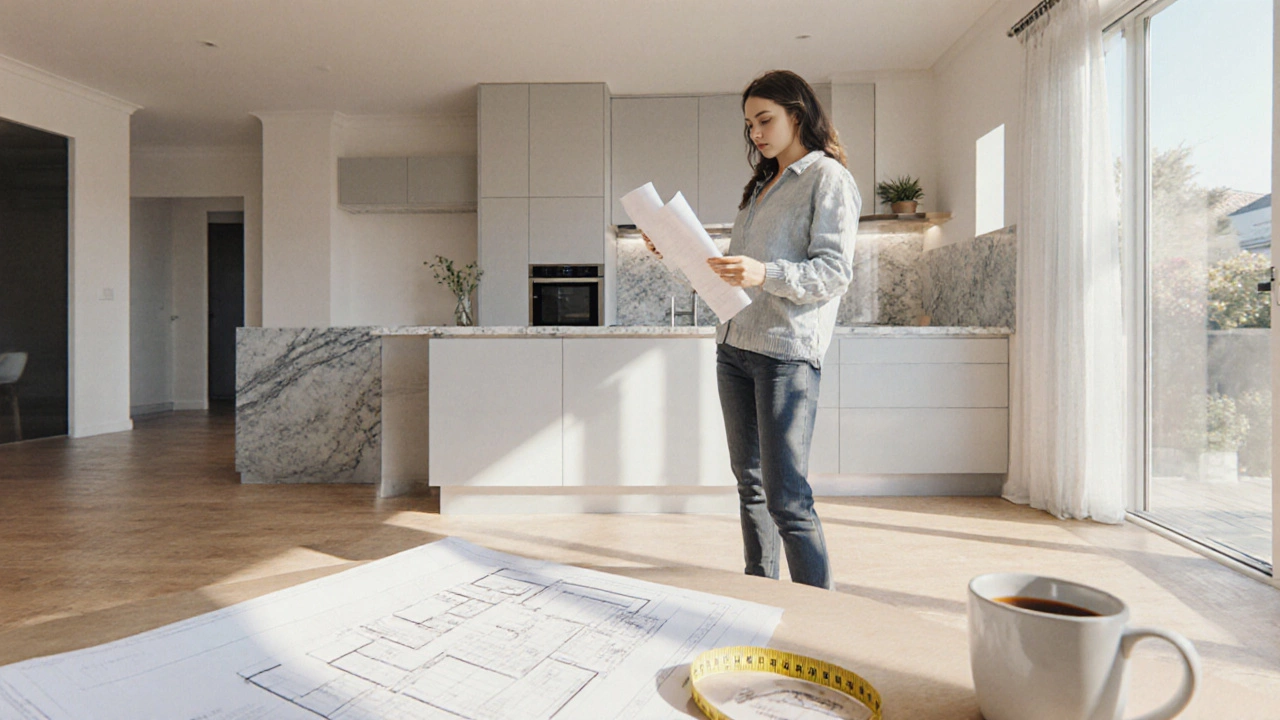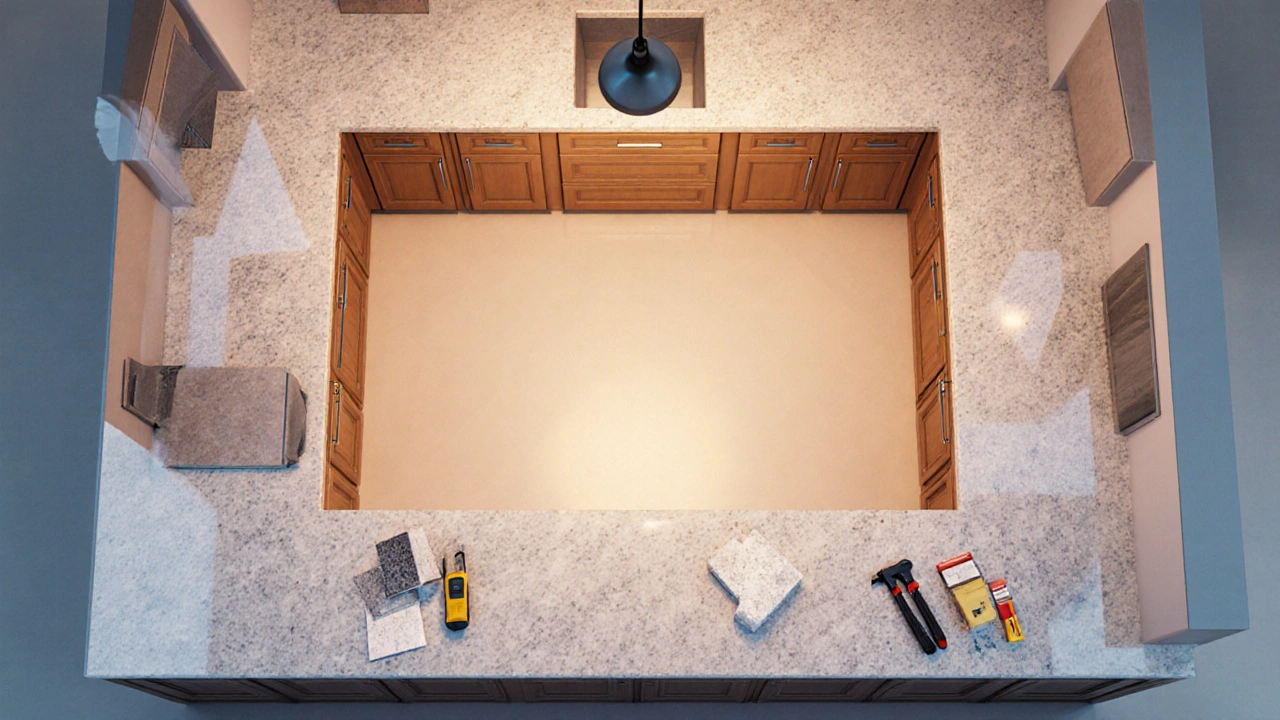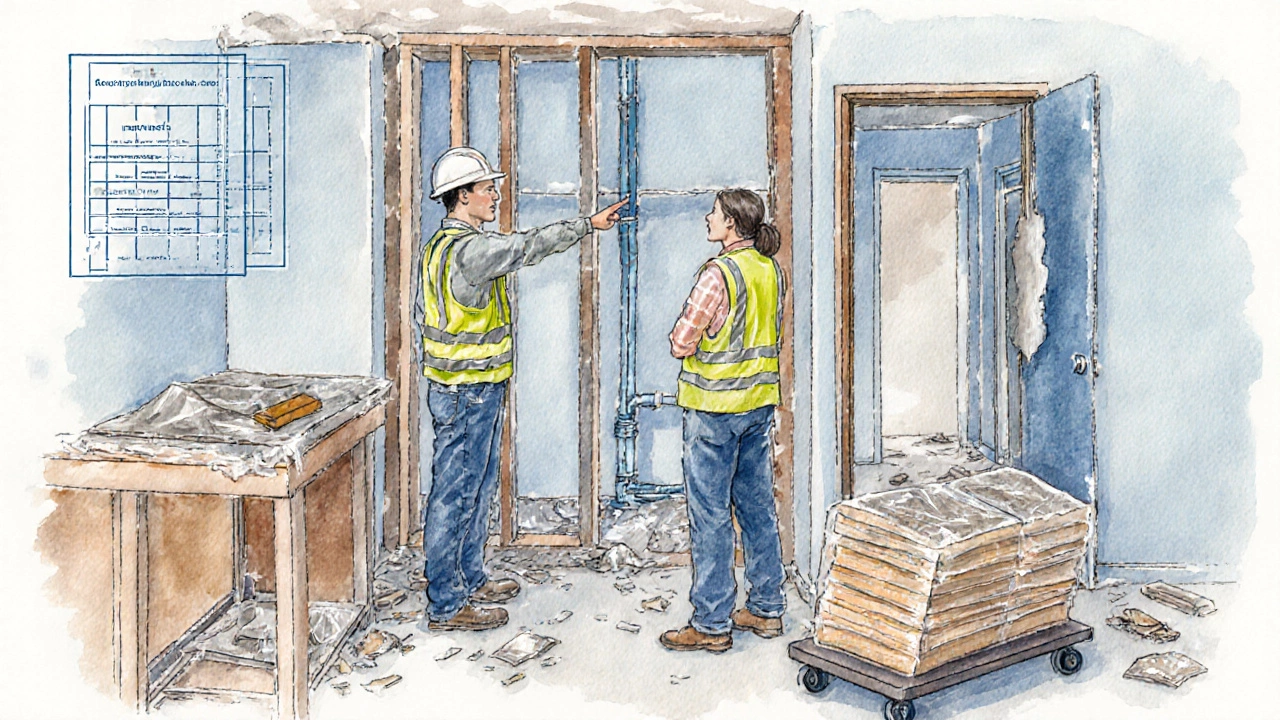How Much Does Kitchen Fitting Cost in NewZealand?
 Oct, 4 2025
Oct, 4 2025
Kitchen Fitting Cost Estimator
Estimated Kitchen Fitting Cost
Range:
Includes labor, materials, and standard features.
Breakdown:
When you picture a fresh kitchen, you probably imagine new cabinets, a sleek countertop, and appliances that just click into place. But before the excitement turns into reality, the biggest question looms: how much would someone charge to fit a kitchen? In this guide we break down every cost element you’ll meet in NewZealand, show you realistic price ranges, and give you a step‑by‑step plan to lock in a fair quote.
What Kitchen fitting is the process of installing cabinets, worktops, appliances, plumbing and electrical services to turn a bare space into a functional kitchen?
Kitchen fitting isn’t a single task; it’s a collection of specialised trades working together. A typical job involves:
- Removing old units and prepping the room
- Installing base and wall cabinets (Cabinet installation the placement and securing of kitchen cabinets to walls and floors)
- Fitting the countertop (Countertop fitting cutting, sealing and mounting of stone, laminate or solid surface worktops)
- Connecting sinks, taps and appliances (Plumbing the installation of water supply and drainage for kitchen fixtures)
- Running power points and lighting (Electrical work wiring, socket installation and lighting setup for kitchen appliances)
- Testing everything and handing over the finished space
Typical price range for a full kitchen fit in NZ
Based on recent quotes from Wellington, Auckland, Christchurch and Dunedin, a complete kitchen fit (including cabinets, worktop, appliances, plumbing and electrical) usually falls into these brackets:
| Project size | Low‑end estimate | Mid‑range estimate | High‑end estimate |
|---|---|---|---|
| Small (1‑2m² worktop, basic cabinets) | NZ$8,500 | NZ$12,000 | NZ$15,500 |
| Medium (3‑4m² worktop, semi‑custom cabinets) | NZ$13,000 | NZ$18,500 | NZ$24,000 |
| Large (5m²+ worktop, high‑end custom cabinets) | NZ$20,000 | NZ$28,500 | NZ$38,000 |
These numbers already include the Labor rates hourly charges for tradespeople, usually between NZ$80‑$120 per hour in the major centres but exclude premium appliances or structural changes such as moving walls.
Key factors that push the price up or down
Understanding what drives the final bill helps you control the budget.
- Material choice: Laminate worktops start at about NZ$40/m², while engineered quartz or natural stone can exceed NZ$200/m². Cabinet finishes range from stock NZ$150/linearft to bespoke NZ$450/linearft.
- Complex layout: Simple L‑shapes are cheapest. A U‑shape or island adds extra cabinet runs, additional plumbing and more labour hours.
- Existing conditions: If walls need rebuilding, floor leveling, or asbestos removal, you’ll pay for a Subcontractor a specialist hired by the main fitter for specific tasks such as demolition or asbestos handling, often NZ$30‑$45 per hour.
- Location: Auckland and Wellington tend to be 10‑15% higher than smaller towns because of labour market pressure.
- Regulatory requirements: If the work involves relocating a sink or modifying gas lines, a Building consent formal approval from the local council for certain structural or plumbing changes may be needed, adding NZ$500‑$1,200 to the bill.

How to get an accurate quote - the five‑step process
Most homeowners end up overpaying because they skip thorough preparation. Follow these steps:
- Measure twice, plan once: Draw a simple floor plan on graph paper, note window and door locations, and mark where appliances will sit. Include the height of base cabinets (usually 600mm) and the intended worktop overhang.
- Pick your finishes early: Choose cabinet style, worktop material and faucet model before you call any fitter. This lets contractors price material costs rather than guessing.
- Request three written quotes: Ask each installer to break down labour, materials, disposal and any additional fees. A transparent quote will list each trade (e.g., Plumbing hourly cost and material markup for pipes, fittings and waste, Electrical work cost for new circuits, switchboard upgrades and safety testing).
- Check credentials: Verify the company holds a valid Licensed Builder number, and ask for references. In NewZealand, a qualified kitchen fitter should also be a registered Electrical Contractor if they handle wiring.
- Negotiate the schedule and payment terms: Avoid paying more than 20% upfront. A typical schedule is 30% deposit, 40% midway, and the remainder on completion after a final inspection.
Sample budget checklist - what to include in your spreadsheet
- Design & planning (drafts, CAD drawings) - NZ$300‑$600
- Cabinets (material + hardware) - see material table above
- Worktop - cost per m² × total area + sealing
- Appliances (included in fit price?) - note if not part of installer’s quote
- Plumbing - pipework, tap, sink, labour
- Electrical - new circuits, socket outlets, lighting fixtures
- Labour - hourly rate × estimated hours (usually 80‑120hrs for medium jobs)
- Disposal & cleanup - NZ$200‑$400
- Building consent (if required) - NZ$500‑$1,200
- Contingency (10% of total) - for unforeseen issues like hidden water damage
Avoiding hidden costs and common pitfalls
Even a well‑planned project can slip if you ignore these red flags:
- Unclear scope: If the quote says “all labour” but doesn’t list plumbing or electrical, you may get an extra invoice later.
- Missing demolition: Some installers assume you’ll take care of removing old units. Ask explicitly if demolition is included.
- Delivery fees: Large worktop slabs often require special handling. Confirm whether delivery is part of the material price.
- Warranty gaps: Verify whether the fitter’s workmanship warranty covers both cabinet joinery and plumbing connections.
- Permits overlooked: In Auckland, moving a gas line triggers a Gas Installer Licence requirement. Skipping the permit can halt the project.
Quick reference - price calculator (rough)
Plug your numbers into this simple formula to get a ballpark figure:
Total Cost ≈ (Cabinet cost + Worktop cost)
+ (Plumbing hrs × NZ$90)
+ (Electrical hrs × NZ$95)
+ (Labour hrs × NZ$100)
+ Misc (NZ$800)
+ 10% Contingency
For example, a medium kitchen with NZ$7,000 cabinets, NZ$2,500 worktop, 12hrs plumbing, 10hrs electrical and 80hrs general labour works out to roughly NZ$18,300 after contingency.

Frequently Asked Questions
What’s the biggest cost driver for a kitchen fit?
Material choice usually tops the list. High‑end quartz worktops and custom‑finished cabinets can double or triple the price of a basic fit.
Do I need a building consent for moving a kitchen sink?
If the relocation affects the structural wall or requires new drainage penetrations, most councils require a consent. Simple surface‑mount moves usually do not.
Can I DIY the demolition to save money?
Yes, but only if you’re comfortable handling asbestos or load‑bearing walls. Any mistake can add costly remediation later.
How long does a typical kitchen fit take?
A standard medium‑size kitchen usually needs 2‑3 weeks from demolition to final handover, assuming no major structural changes.
What should I look for in a contract?
Clear scope of work, itemised cost breakdown, payment schedule (max 20% deposit), warranty period, and a clause for handling change orders.
